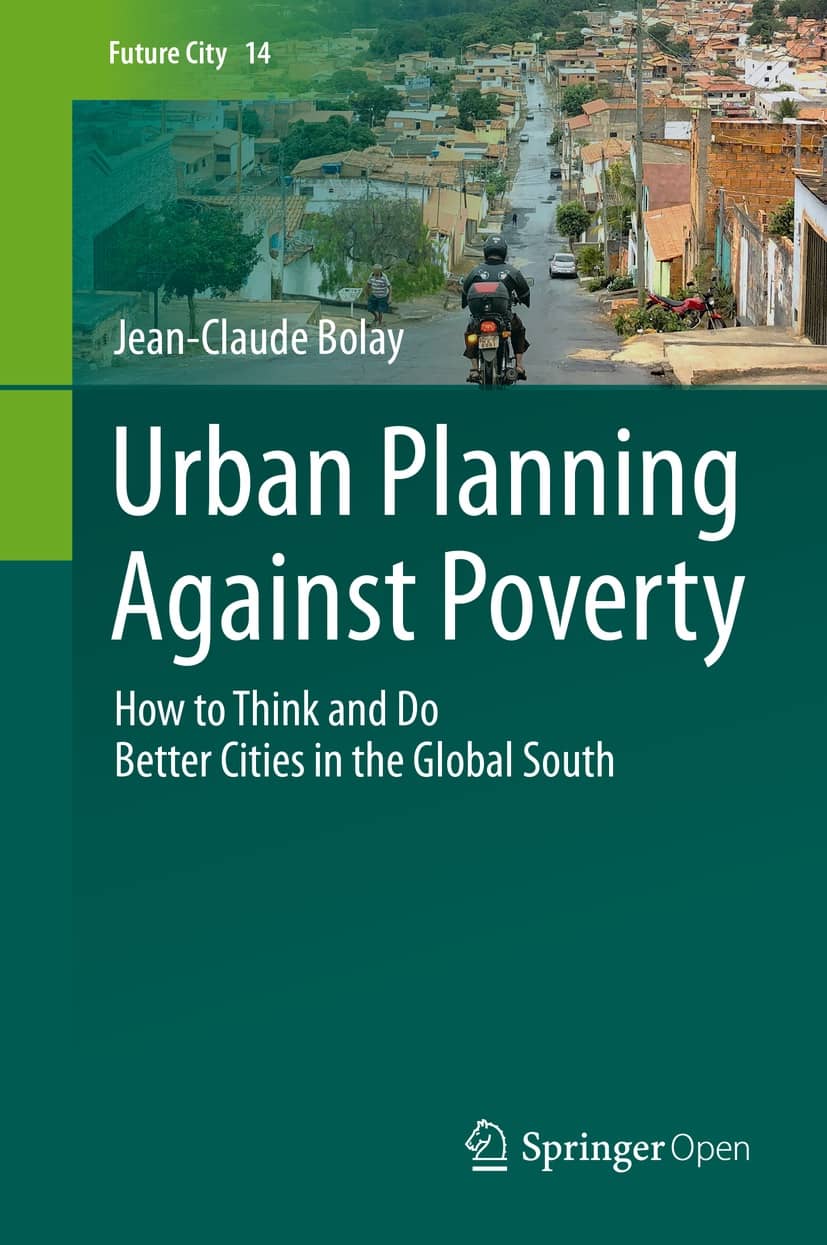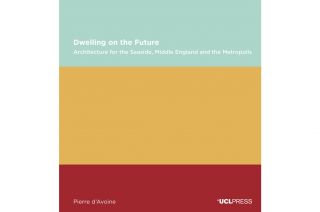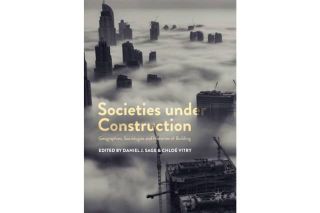
www.buildingsandcities.org/insights/reviews/urban-planning-against-poverty-review.html
Urban Planning Against Poverty: How to Think and Do Better Cities in the Global South
By Jean-Claude Bolay. Springer, 2020, ISBN 9783030284190.
Joshua Kirshner (University of York) reviews this book which explores the foundations of urban planning and their suitability for application in mid-sized cities of the Global South.
 "When it comes to cities in emerging or
developing countries (especially small and medium-sized cities), our thinking
requires an urgent overhaul." So begins Jean-Claude Bolay's Urban Planning Against Poverty, an open
access book in Springer's Future Cities
series. It revisits the conceptual foundations of urban planning and considers their
application in Southern cities. Through diverse international case studies, Bolay
re-envisions approaches to spatial and social planning to better tackle urban poverty
and social exclusion. The author guides us through a rethinking that puts the
needs of urban residents first, without losing sight of persistent obstacles
such as insufficient budgets and capacity building, divergent interests, and deep-seated
structural inequalities. Rather than a focus on mega-city regions, global
cities and other urban formations, Bolay directs our attention to less-known,
mid-sized cities of the Global South.
"When it comes to cities in emerging or
developing countries (especially small and medium-sized cities), our thinking
requires an urgent overhaul." So begins Jean-Claude Bolay's Urban Planning Against Poverty, an open
access book in Springer's Future Cities
series. It revisits the conceptual foundations of urban planning and considers their
application in Southern cities. Through diverse international case studies, Bolay
re-envisions approaches to spatial and social planning to better tackle urban poverty
and social exclusion. The author guides us through a rethinking that puts the
needs of urban residents first, without losing sight of persistent obstacles
such as insufficient budgets and capacity building, divergent interests, and deep-seated
structural inequalities. Rather than a focus on mega-city regions, global
cities and other urban formations, Bolay directs our attention to less-known,
mid-sized cities of the Global South.
In Chapter 2, 'Urban Facts,' Bolay makes the case for the importance of small and medium-sized cities in the Global South as 'intermediate cities' within wider urban networks, advocating for their centrality in global urban agendas given their strategic role in regional economies, their linking of urban and rural worlds via migration, mobility and supply chains, and their growing share of the world's urban residents. Some interesting discussion of rural-to-urban migration flows, drawing on Bolay's doctoral research in central Mexico, is also presented. Chapter 3, 'Global Sustainability: How to Rethink Urban Planning,' highlights the disjuncture between spatial planning methods fostered in developed economies and the pressing needs and aspirations of developing world cities and their residents. Such disjuncture is particularly felt among poorer urban dwellers living precariously with high levels of informality in employment, land, habitat and access to basic services (e.g. water and electricity) and the legacies of colonial planning histories.
Bolay then turns to developing three case studies: one from West Africa and two from South America, covered in Chapters 4-6. First, Koudougou (pop. 120,000), an intermediate city in Burkina Faso-one of the poorest countries in the world-offers scope to understand how these issues translate in the African urban context. The reader encounters a provincial capital whose authorities confront multiple challenges, but are unable to systematically address them due to an insufficient municipal budget and dependence on the central government and international aid agencies. Urban development thus depends less on local consultation than on donor priorities and top-down, state-led decision making. Bolay stresses the need for reinventing planning in the African context while advocating greater autonomy for local actors to decide how best to put it to useful ends.
Second, Nueve de Julio (pop. 50,000), which lies in the Argentine pampas, demonstrates new forms of social exclusion and spatial fragmentation linked to production for agro-export markets in a small-sized city with growing global connections. Founded in the 19th Century amid territorial conquest, the city typifies secondary cities in terms of its relationship to surrounding rural spaces and local-global linkages. With no long-term vision for sustainable urban development, successive municipal governments have allowed longer-term challenges to mount while addressing only the most urgent problems. As a result, it now faces runaway territorial sprawl and has a poor, poorly integrated populace. Sustainability planning is much needed, but leaders are ambivalent about embracing longer-term investments with no visible or immediate effects when local elections loom.
Montes Claros, an agglomeration of some 400,000 residents in Minas Gerais, Brazil, is the third city under study. In 2015, local authorities updated its master plan with support from universities and professional planners and technicians, but with little input or engagement with ordinary residents. Somewhere between non-existent planning (as in the Argentine example) and exogenous, top-down planning (seen in the Burkina Faso case), the Brazilian example allows us to follow an unfolding process. Faced with ongoing demographic growth and a variety of political and economic risks, the authorities are concentrating on the city centre while abandoning its peripheries. Rather than taking the opportunity to extend bottom-up participation and recognize residents' agency in broader urban trajectories, they rely on a techno-economic approach, revealing professional biases in public administration and reinforcing socio-economic privilege and hierarchies.
Before concluding, Bolay puts in perspective the discussion of the three cases to highlight the challenges of pursuing sustainable urban development. Though enormously different in their geo-historical development, each is a lesser-known city serving as a hub for a wider region, tapping into global circulations and infrastructures, and linking surrounding rural spaces. Each faces challenges of service provision, accessibility, liveability and job creation amid rapid (and often unplanned) urban expansion, with new neighbourhoods cropping up on their outskirts.
The book is readable and accessible, integrating perspectives from the literature with the author's own research and three decades of on-site professional experience. It would be a good addition to university courses in planning, urban studies and geography at upper-level undergraduate or masters level. Compelling photos taken by the author are interspersed, and Bolay uses some appealing phrasing, such as when he says "your breath forgets to disembark with you in El Alto airport, 4150m above sea level," (p. 19) in recounting a visit to La Paz, Bolivia. The early chapters are wide-ranging with a wealth of empirical details, but at times unwieldy, lacking clear and succinct summaries to wrap up. A few points seem outdated, such as a mention of NAFTA on p. 21, or "the recent liberalization of international trade rules and instantaneity of telecommunications" on p. 36. Some more recent or emerging trends are neglected, including the hardening of borders and 'de-globalization', the use of algorithms in urban service provision and securitization, or China's and India's engagement in Global South cities' infrastructure.
A related point, Bolay's treatment of the literature frequently relies on sources from the 1990s and 2000s in tracing the evolution of development planning, but equally in attending to current urban dynamics, especially in the framing chapters. Much contemporary, interdisciplinary urban research is overlooked, such as on urban precarity, infrastructural politics and urban sustainability transitions, off-grid cities, nature-based solutions, climate disruption, intersectionality and exclusion. To take just a few tributaries from this (transdisciplinary) river would enrich Bolay's account of the realities in these cities while enhancing his critique of Eurocentric and technocratic planning approaches
That said, the book provides a useful synthesis that broadens our understanding of spatial planning, social integration and poverty alleviation in less-studied, mid-sized cities of economies in transition, where a growing share of humanity resides. It offers valuable insights that can inform planning practice and theoretical understandings of our increasingly urban condition.
Latest Peer-Reviewed Journal Content
A living lab approach to co-designing climate adaptation strategies
M K Barati & S Bankaru-Swamy
Mediation roles and ecologies within resilience-focused urban living labs
N Antaki, D Petrescu, M Schalk, E Brandao, D Calciu & V Marin
Negotiating expertise in Nepal’s post-earthquake disaster reconstruction
K Rankin, M Suji, B Pandey, J Baniya, D V Hirslund, B Limbu, N Rawal & S Shneiderman
Designing for pro-environmental behaviour change: the aspiration–reality gap
J Simpson & J Uttley
Lifetimes of demolished buildings in US and European cities
J Berglund-Brown, I Dobie, J Hewitt, C De Wolf & J Ochsendorf
Expanding the framework of urban living labs using grassroots methods
T Ahmed, I Delsante & L Migliavacca
Youth engagement in urban living labs: tools, methods and pedagogies
N Charalambous, C Panayi, C Mady, T Augustinčić & D Berc
Co-creating urban transformation: a stakeholder analysis for Germany’s heat transition
P Heger, C Bieber, M Hendawy & A Shooshtari
Placemaking living lab: creating resilient social and spatial infrastructures
M Dodd, N Madabhushi & R Lees
Church pipe organs: historical tuning records as indoor environmental evidence
B Bingley, A Knight & Y Xing
A framework for 1.5°C-aligned GHG budgets in architecture
G Betti, I Spaar, D Bachmann, A Jerosch-Herold, E Kühner, R Yang, K Avhad & S Sinning
Net zero retrofit of the building stock [editorial]
D Godoy-Shimizu & P Steadman
Co-learning in living labs: nurturing civic agency and resilience
A Belfield
The importance of multi-roles and code-switching in living labs
H Noller & A Tarik
Researchers’ shifting roles in living labs for knowledge co-production
C-C Dobre & G Faldi
Increasing civic resilience in urban living labs: city authorities’ roles
E Alatalo, M Laine & M Kyrönviita
Co-curation as civic practice in community engagement
Z Li, M Sunikka-Blank, R Purohit & F Samuel
Preserving buildings: emission reductions from circular economy strategies in Austria
N Alaux, V Kulmer, J Vogel & A Passer
Urban living labs: relationality between institutions and local circularity
P Palo, M Adelfio, J Lundin & E Brandão
Living labs: epistemic modelling, temporariness and land value
J Clossick, T Khonsari & U Steven
Co-creating interventions to prevent mosquito-borne disease transmission in hospitals
O Sloan Wood, E Lupenza, D M Agnello, J B Knudsen, M Msellem, K L Schiøler & F Saleh
Circularity at the neighbourhood scale: co-creative living lab lessons
J Honsa, A Versele, T Van de Kerckhove & C Piccardo
Positive energy districts and energy communities: how living labs create value
E Malakhatka, O Shafqat, A Sandoff & L Thuvander
Built environment governance and professionalism: the end of laissez-faire (again)
S Foxell
Co-creating justice in housing energy transitions through energy living labs
D Ricci, C Leiwakabessy, S van Wieringen, P de Koning & T Konstantinou
HVAC characterisation of existing Canadian buildings for decarbonisation retrofit identification
J Adebisi & J J McArthur
Simulation and the building performance gap [editorial]
M Donn
Developing criteria for effective building-sector commitments in nationally determined contributions
P Graham, K McFarlane & M Taheri
Join Our Community

The most important part of any journal is our people – readers, authors, reviewers, editorial board members and editors. You are cordially invited to join our community by joining our mailing list. We send out occasional emails about the journal – calls for papers, special issues, events and more.
We will not share your email with third parties. Read more



Latest Commentaries
COP30 Report
Matti Kuittinen (Aalto University) reflects on his experience of attending the 2025 UN Conference of the Parties in Belém, Brazil. The roadmaps and commitments failed to deliver the objectives of the 2025 Paris Agreement. However, 2 countries - Japan and Senegal - announced they are creating roadmaps to decarbonise their buildings. An international group of government ministers put housing on the agenda - specifying the need for reduced carbon and energy use along with affordability, quality and climate resilience.
Building-Related Research: New Context, New Challenges
Raymond J. Cole (University of British Columbia) reflects on the key challenges raised in the 34 commissioned essays for Buildings & Cities 5th anniversary. Not only are key research issues identified, but the consequences of changing contexts for conducting research and tailoring its influence on society are highlighted as key areas of action.